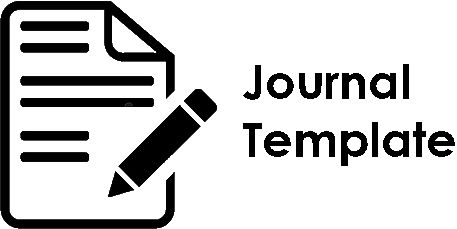Arah Arus Purba Formasi Bapang Daerah Dayu dan Sekitarnya Kecamatan Gondangrejo Kabupaten Karanganyar Provinsi Jawa Tengah
DOI:
https://doi.org/10.31315/jmel.v1i1.1772Keywords:
Arus Purba, Unimodal, CrossBeddingAbstract
Daerah penelitian secara administrasi terletak di daerah Dayu dan sekitarnya, Kecamatan Gondangrejo, Kabupaten Karanganyar, Provinsi Jawa Tengah. Bagian Utara dari daerah penelitian dibatasi oleh Desa Bukuran, disebelah Timur dibatasi oleh Desa Jembangan, disebelah Barat dibatasi oleh Desa Krandowahono, dan disebelah Selatan dibatasi oleh Desa Rejosari. Stratigrafi daerah penelitian terdiri atas enam satuan litostratigrafi dengan urutan dari tua ke muda adalah Formasi Puren (Pliosen Awal-Akhir), Formasi Cemoro (Plistosen Awal), Formasi Bapang (Plistosen Awal-Tengah), Formasi Pohjajar (Plistosen Tengah), Mud Vulcano (Plistosen Akhir) mengintrusi satuan yang lebih tua sebelumnya, dan satuan Endapan Aluvial (Holosen) yang menumpang tidak selaras di atas batuan yang lebih tua. Struktur geologi yang berkembang pada daerah penelitian dipengaruhi oleh deformasi kedua Zona Kendeng yang berarah utara - selatan. Penelitian arah arus purba di daerah Dayu, menggunakan hasil pengukuran arah sumbu struktur sedimen cross-bedding yang tersebar di Formasi Bapang. Berdasarkan hasil pengukuran arah sumbu cross-bedding di delapan belas lokasi pengukuran, disimpulkan bahwa arah arus purba Formasi Bapang mengarah ke baratlaut dengan tinggian di sebelah tenggara. Arah arus purba Formasi Bapang berpola Unimodal (Tucker, 2003) yang mencirikan lingkungan pengendapan Fluvial, dengan material vulkanik yang diperkirakan bersumber dari sebelah tenggara lokasi penelitian.
References
Danisworo, C., 1987, Lithostratigraphy and Magnetostratigraphy of the Quaternary Deposits in the Sangiran Area, Central Java, Indonesia. Vrije Universiteit Brussel. Doc. Thesis. Unpublished.
Duyfjes, J., 1936, Zur Geologie und Stratigraphie des Kendeng gebietes zwischem Trinil und Surabaya (Java). De Ing. Ned. Ind. hal. 4, 8, 136-148.
Indonesia-Japan Research Cooperation Program CTA 41., 1979, Prog. Report of the Indonesia-Japan Joint Research Project on Geol. of Human fossil Bearing Formations in Java (1). Bull. Geol. Res. And Dev.Center, No.1.
Nichols, G., 2009, Sedimentology and stratigraphy. 2nd edition., John Wiley & Sons, Ltd., Publication, United Kingdom, hal. 129-150.
Pringgoprawiro, H., 1983, Biostratigrafi dan Paleogeografi Cekungan Jawa Timur: Suatu Pendekatan Baru, Thesis Doktor, ITB, Bandung.
Sartono, S., 1961, Notes on a new find of a Pithecanthropus mandible. Publ. Tek., Dir. Geol., Seri Paleontologi, hal. 2, 1-51.
Sartono, S., 1970, On the stratigraphic position of Pithecanthropus mandible C. Proc. ITB, hal. 4, 91-92.
Sartono, S., 1975, Implication arising from Pithecanthropus VIII. In ; Tuttle, R.H. (Ed), Paleoanthropology: Morphology and Paleoeccology, 327-360, Mouton, Paris.
Sartono, S., 1978, The site of Homo erectus mandible F. Modern Quarter. Res. Southeast Asia, hal. 4, 19-24.
Satyana, A.H. and Arman, C., 2004, Deepwater Plays Of Java, Indonesia: Regional Evaluation On Opportunities And Risk, Proceeding Indonesia Petroleum Association, Twenty – Ninth Annual Convertion & Exibition.
Tucker, M.E., 2003, Sedimentary Rocks in the Field. 3rd edition., John Wiley & Sons, Ltd., Publication, United Kingdom, hal.179-190.
Van Bemmelen, R. W., 1949, “The Geology of Indonesia”, vol IA, 2nd ed, The Haque Martinus Nijhoff, Netherlands.
Van Koenigswald, G. H. R., 1940, Neue Pithecantropus-Funda 1936-1938. Ein beitharg zur Kennitis der Praehominiden. Wetensch, Meded. No. 28. Dienst. Mijnb.Ned. Indie.
Watanabe, N. and Kadar, D., 1985, Quaternary Geology of The Homonid fossil formation in Java. Directorate General of Geology and Mineral Research, Geological Research & Development Centre. Special Publication.
Downloads
Published
Issue
Section
License
Authors who publish with this journal agree to the following terms:
- Authors retain copyright and grant the journal right of first publication with the work simultaneously licensed under a Creative Commons Attribution License that allows others to share the work with an acknowledgement of the work's authorship and initial publication in this journal.
- Authors are able to enter into separate, additional contractual arrangements for the non-exclusive distribution of the journal's published version of the work (e.g., post it to an institutional repository or publish it in a book), with an acknowledgement of its initial publication in this journal.
- Authors are permitted and encouraged to post their work online (e.g., in institutional repositories or on their website) prior to and during the submission process, as it can lead to productive exchanges, as well as earlier and greater citation of published work (See The Effect of Open Access).


